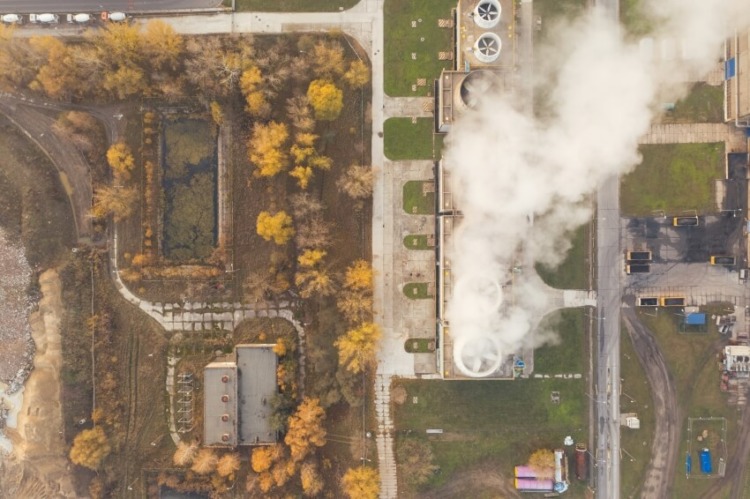As global leaders and activists bring attention to climate change and the importance of environmentalism, more and more individuals converse about fossil fuels. The topic at hand has morphed into a highly political, ethical, and financial issue that frequents mainstream media and news outlets.
Even those who remain ignorant to environmental and fossil fuel discourse rely heavily upon fossil fuels.
According to the National Academics of Science, Engineering, and Medicine, 81% of the United States’ energy comes from a fossil fuel source.
The energy powers our vehicles, warms our homes, provides electricity, and keeps manufacturers running. But how much does the United States depend on fossil fuels?
The United States’ dependence on fossil fuels runs deep.
To grasp the complexity of fossil fuel energy, one must understand the history of the fossil fuel industry, the economics that support it, the environmental effects, and possible alternatives.
To ease fossil fuel research and awareness, this article answers common questions relating to the United States’ consumption and dependence on fossil fuels.
What Are Fossil Fuels?

A simple google search explains that fossil fuel is a hydrocarbon containing material formed from the remains of dead plants and animals underground. Humans extract fossil fuels and burn them for energy consumption.
Perhaps most importantly, fossil fuels are a non-renewable resource.
Fossil Fuels Are Non-Renewable Resources
A non-renewable resource naturally occurs and cannot be readily replaced by natural means at a pace fast enough to keep up with consumption.
Fossil fuels take millions of years to form, and sources of fossil fuels currently deplete much faster than the generation of new sources. There are many resources considered fossil fuels. However, the main 3 fossil fuels used in the United States consist of coal, natural gas, and petroleum.
Coal
Coal is a combustible, black sedimentary rock primarily used for fuel. Coal extracts from coal seams, or rock strata. As a fossil fuel, coal forms as dead plant matter decays and converts into a rock by heat, pressure, and deep burial over millions of years.
The chemical make-up of coal includes carbon, followed by hydrogen, nitrogen, oxygen, and sulfur.
Natural Gas
Natural gas is colorless, odorless, and explosive.
Natural gas forms as layers of decaying plant and animal matter get exposed to intense pressure and heat in the Earth over millions of years. Chemical bonds in natural gas preserve energy the decaying plays originally stored from the sun.
Natural gas is a hydrocarbon gas mixture. Methane, other hydrocarbons, and sometimes nitrogen, helium, carbon dioxide, or hydrogen sulfide make up natural gas.
Petroleum
Petroleum, commonly found in liquid fuels, forms from large amounts of dead organisms, such as algae, buried underneath sedimentary rock and experiencing intense pressure and heat.
Petroleum consists of a dark, brown liquid found underground in various geological formations.
Like coal and natural gas, naturally occurring hydrocarbons make up petroleum alongside other organic compounds.
How Are Fossil Fuels Extracted?

Fossil fuels live far below the Earth’s surface.
According to NBC, coal strata typically exist 200 to 300 feet underground. Additionally, petroleum and natural gas deposits lay 1-2 miles under the surface, and petroleum and gas deposits sometimes reach more than six miles underground.
The two main ways of extracting fossil fuels consist of different mining and drilling methods.
Drilling, Scraping, and Mining
In brief, mining primarily extracts coal and other solid fossil fuels by digging and exposing buried coal strata. Drilling methods remove petroleum and natural gas from the Earth by forcing them to flow to the surface.
Most mining and drilling methods prove detrimental to ecosystems and surrounding communities.
Mining
Underground coal mining leads to injury and accidents on the job. Chronic health disorders such as black lung disease often develop in underground coal mining employees as well.
Due to the dangers of people conducting underground coal mining, surface mining techniques override the coal industry in the United States.
Surface mining consists of strip mining and mountaintop removal. Both are highly invasive and only work for shallow coal deposits.
More so, surface mining removes soil, trees, and other vegetation to access coal through highly destructive means. After vegetation removal, explosives blast through the Earth, creating easy access to coal hundreds of feet below the surface.
The short and long-term effects of surface mining consist of environmental damage.
For starters, surface mining disposes of excess soil and rock into streams and bodies of water. After surface mining completes, the soil leftover can no longer support ecosystems and vegetation.
As for surrounding communities, strip mining puts people at the risk of landslides, mudslides, and flash floods. Depending on the coal deposit, toxic chemicals such as lead and iron often pollute community drinking water.
See Related: Most Ethical Gemstones: Is Mining Ethically Possible?
Drilling
Drilling consists of onshore and offshore drilling methods. The most widely debated form of drilling is fracking or natural gas hydraulic fracturing. However, virtually all forms of drilling extraction methods carry consequences.
Fracking methods result in dangerous conditions for humans and water waste. Through fracking, water draws up to the surface.
The water carries naturally occurring hydrocarbons and radioactive materials.
The radioactive materials that come with fossil fuels are dangerous to remove and dispose of. Fracking requires millions of gallons of water, resulting in mass amounts of waste, even with Federal regulations.
Onshore drilling methods result in noise and wildlife habitation disruption and require large sections of land dedicated to drilling facilities and pipelines.
Additionally, the extraction of natural gas increases the number of greenhouse gasses released into the air.
The emission of greenhouse gasses poses serious health and environmental risk. According to the World Bank, 5.3 trillion cubic feet of natural gas is emitted through drilling.
This constitutes 25% of total US consumption released worldwide. It also results in the release of 400 million tons of carbon dioxide, creating intense environmental damage and hazardous situations.
See Related: Is It Too Late to Stop Climate Change? Fast Facts You Need to Know
Why Does the United States Depend on Fossil Fuels?

Since the dawn of the Industrial Revolution, the United States’ dependence on fossil fuels has increased. Coal, natural gas, and petroleum power almost every aspect of American lives.
Extraction also costs little, encouraging United States dependence on fossil fuels. Financially and geopolitically, fossil fuel extraction is an advantageous source of energy.
Economics, Politics, and Consumption Reliance
So, how much does the United States depend on fossil fuels? Energy companies rely on making a profit and reducing costs. Cheap fossil fuels are the backbone of the United States’ energy economy.
Likewise, the United States’ energy policy historically centers on the concept of energy dominance.
Energy dominance consists of policy that maximizes energy production, expands exports, and globally leads energy technologies. Politicians previously focused on deregulation, but now regulation has slowly crept back into the picture.
Energy politics remains key in United States foreign policy. As such, the feds provide large subsidies to fossil fuel businesses.
Should the United States Eliminate Subsidies for Fossil Fuels?
From 2002 to 2008, subsidies to fossil fuels came to almost $72 billion. At the same time, subsidies for renewable energy totaled $29 billion.
According to the Yale School of Environment, in 2020 fossil fuels received $5.9 trillion in subsidies.
92% of the subsidies took the form of tax breaks and health and environmental damages unaccounted for in the cost of fossil fuels. The rest of the subsidies provided were direct.
See Related: Important Pros and Cons of Fossil Fuels
The United States Ought to Eliminate Subsidies for Fossil Fuels
The United States should eliminate subsidies for fossil fuels based on environmental protection, consideration for the American taxpayer, and financial security.
Subsidies provide the fossil fuel industry with an incentive to continue over other forms of energy, inevitably increasing environmental damage that is already irreversible.
Subsidies on behalf of fossil fuels cost American taxpayers money and override other potential forms of financial security for the US. For example, the fossil fuel subsidies from 2002 to 2008 incorporated direct costs from taxpayers.
Instead of direct and indirect fossil fuel subsidies, a carbon tax would potentially reduce carbon emissions by about 1/3rd. A possible carbon tax raises revenues equal to 3.8 percent of global GDP.
The reduction of carbon emissions would prevent an estimated 1 million deaths from local air pollution yearly. Energy subsidies would also be more beneficial allocated towards alternative energy industries.
See Related: Energy Conservation Techniques
How Can the United States Limit its Dependence on Fossil Fuels?

As the access to fossil fuels declines and awareness of environmental destruction increases, U.S. dependence on fossil fuels must diminish. The U.S. relies heavily on fossil fuels. Incorporating new energy sources takes time.
First, the U.S. should remove fossil fuel sector subsidies. Next, the U.S. should focus on energy efficiency awareness, and introducing renewable energy will limit dependence on fossil fuels.
Implement Energy Efficiency
Energy efficiency focuses on reducing energy waste on an individual and corporate basis, starting in the home, workplace, or on the road.
LED light and lightbulbs are one example of energy waste reduction products. Other energy-efficient products include insulation, smart thermostats, and computer power management, commonly called “sleep” mode.
Energy efficiency values losing less energy while completing the same process, leading to smaller energy bills and reducing pollution.
In the US, most housing facilities, products, and corporate buildings use an excessive amount of energy. This overuse of energy comes from inefficiencies and energy waste.
See Related: How to Make Commercial Building More Energy Efficient
What are Some Examples of Energy That Can Replace Fossil Fuels?

Renewable energy comes from sources that are naturally replenishing but flow-limited.
Renewable energy naturally refurbishes on a small time scale compared to non-renewable resources. Renewable resources include geothermal heat, wind, tides, waves, sunlight, and rain.
However, some resources, such as biomass energy, are not as sustainable as others.
Wind Power, Solar Power, and Hydropower
Currently, wind power is the most popular form of renewable energy. Through wind turbines, a propeller structure that spins wind-powered blades, wind conducts into electricity. The spinning blades conduct energy into a rotor, which spins a generator and creates electricity.
Solar power converts sunlight into electrical energy either through PV panels or solar concentrated radiation mirrors. The solar energy derived converts into electricity or solar-powered batteries.
Hydropower relies on a system that cycles water to produce electricity.
The water is not reduced or wasted in the process. Hydropower utilizes turbines and generators to convert kinetic energy into electricity. The electricity connects to an electrical grid to power communities.
Related Resources
